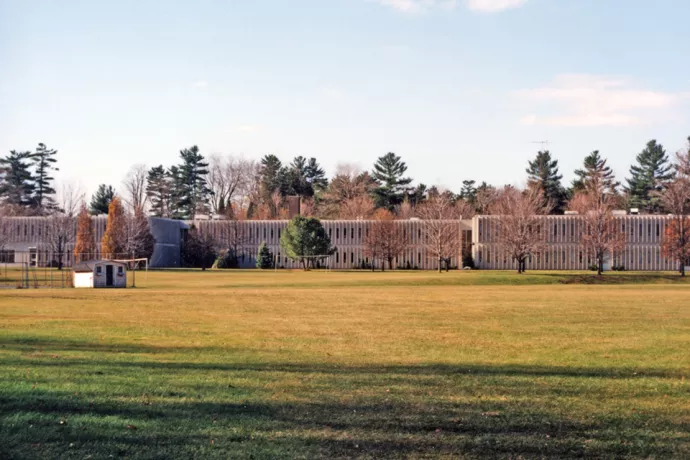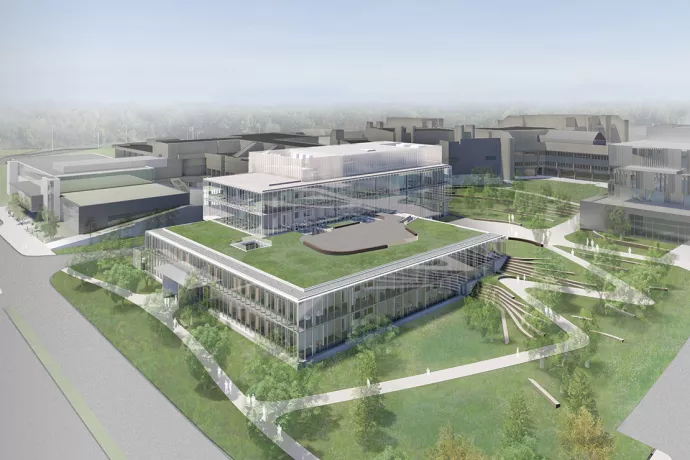
How UTM evolved into an academic hotspot and community engine, and what’s on the horizon
When it comes to the University of Toronto Mississauga’s development, the numbers alone point to a campus on the rise. In 1967, UTM began as a U of T college with a single academic building that accommodated 155 students. Today, the campus houses 29 buildings, and has 15,500 students. UTM has become a leading post-secondary player in Canada and worldwide for those seeking to be part of a high-calibre academic environment with a strong community spirit and serene natural setting.
On the immediate horizon is a new Science Building that will house 31 laboratories, 16 of which will be for the Centre for Medicinal Chemistry. Other building occupants will include the forensic sciences program and a high-performance computing data centre, and the building will complement UTM’s plans for accelerated faculty hiring and graduate student recruitment.
The campus has grown at a steady clip over more than 50 years, with UTM principals pursuing expansion carefully to respect the surrounding nature and neighbourhoods. This emphasis on controlled growth has translated into buildings that house multiple academic programs.

“There is lots of interdisciplinary work happening at UTM,” says Professor Ian Orchard, acting vice-president and principal. “When you have fewer silos, you have more collisions between disciplines, and people begin to appreciate other disciplines more. This has made UTM a campus of choice to study and work.”
UTM has evolved into a robust academic institution that today encompasses 17 academic units offering 155 programs in 95 areas of study. The virtuous cycle of growth, with rising undergraduate enrolment spurring UTM development, was amplified in 2003, when the campus faced a surge in applications from a double cohort of high school graduates following the end of Grade 13.
UTM accelerated its development, with a continued commitment to sustainability. Since 2006, all large academic and research buildings have been built to LEED silver minimum standards; the campus currently has two LEED golds.
“UTM takes a very sustainable approach to development because we want to be in harmony with the surroundings. Maintaining the natural look and feel of our campus, the flora and fauna—it’s key,” says Tammy Cook, executive director of Facilities Management & Planning.
Sustainability has been a priority in step with innovation and modernization, as UTM ensures its new spaces are visually striking and highly functional. This has led to numerous buildings with designs that are both architecturally forward-thinking and award-winning, while also supporting best practices in teaching, learning and research.
UTM’s newest addition, Maanjiwe nendamowinan, is not only functional, sustainable and attractive, it also reflects a fourth priority: reconciliation with local Indigenous communities. The name of the building, which means “gathering of minds” in Anishinaabemowin, was provided by the Mississaugas of the Credit First Nation.
Just as the campus values and facilitates interconnected education, it did not develop in a silo. UTM and Mississauga grew up together, partnering on multiple initiatives to benefit their overlapping constituents. UTM’s connections with the broader region extends to community agencies, businesses, emergency services and even Sheridan College, with which UTM has shared programs. Each year, UTM contributes more than $1.3 billion to the local economy.
“We work closely on many important initiatives with the city,” says Saher Fazilat, chief administrative officer. “From health, culture and community safety to academic research and volunteer touchpoints, we share an unrivalled partnership with the City of Mississauga.”
In the third decade of the 21st century, UTM is adjusting its approach to development. Undergraduate enrolment will remain at a steady state for the next several years while graduate studies will expand. More spaces are needed to conduct advanced research in the sciences, social sciences, and humanities, and to accommodate students wanting to live on campus.
UTM is pursuing $274.5 million in capital construction projects, with an emphasis on a balanced approach to growth through smarter planning and more effective use of resources.
“Our supply of buildable land is limited,” says Fazilat. “So, we’re building responsibly with sustainability as a guiding principle. We want to ensure we offer our community innovative teaching and research facilities where they can succeed and excel.”
This article first appeared in the Spring 2020 issue of M Magazine
